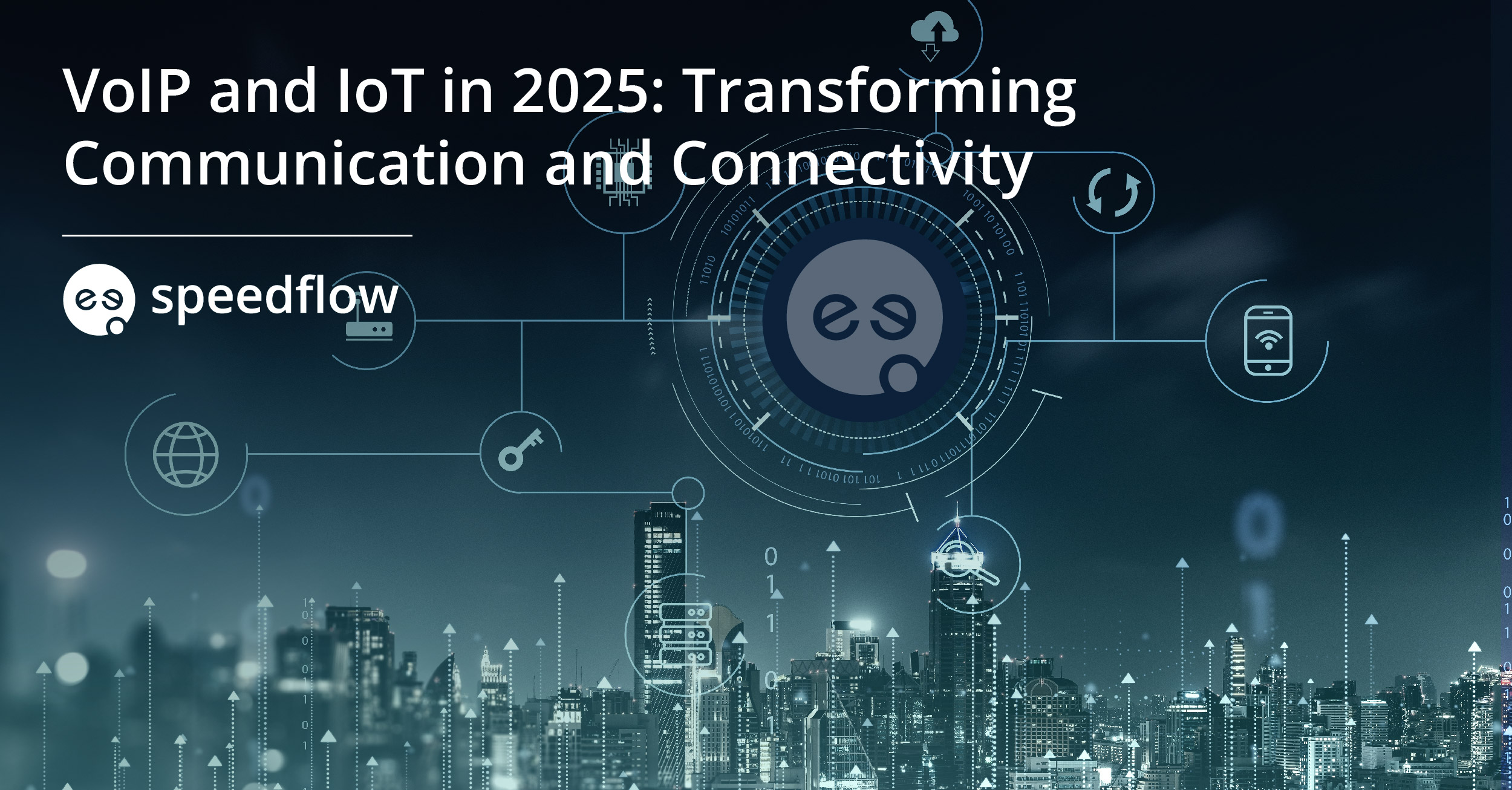The Evolving Landscape
VoIP and IoT are no longer emerging technologies—they are essential pillars of modern communication. Their integration has reshaped how businesses, governments, and consumers connect, driving seamless collaboration, smarter operations, and entirely new digital ecosystems.
VoIP has matured from a cost-saving alternative to traditional telephony into a feature-rich communication platform. Meanwhile, IoT has expanded far beyond smart homes into industries like healthcare, logistics, and manufacturing. Together, they are unlocking efficiencies that were unimaginable just a decade ago.
Advancements in VoIP Technology
The VoIP market is undergoing rapid transformation, fueled by AI integration and the global rollout of 5G networks.
- AI-powered features: Intelligent call routing, real-time transcription, and conversational analytics now help businesses deliver more personalized and efficient services.
- 5G connectivity: With lower latency and higher bandwidth, VoIP calls achieve crystal-clear audio and high-definition video quality, making virtual collaboration smoother than ever.
- Unified communications: Companies are embracing UCaaS platforms that combine VoIP with messaging, file sharing, and video conferencing in a single interface. This is particularly valuable for distributed and hybrid workforces.
IoT Integration and Its Impact
IoT devices are increasingly paired with VoIP to create automated communication networks. In smart homes, for example, VoIP-enabled IoT devices can manage everything from energy consumption to security alerts in real time.
For enterprises, the benefits are even greater:
- Predictive maintenance in manufacturing, where IoT sensors trigger automated VoIP alerts before machines fail.
- Healthcare innovation, with connected medical devices that transmit patient data or emergency voice alerts instantly.
- Smarter logistics, where fleets use VoIP-enabled IoT to coordinate deliveries and optimize routes.
When paired with AI-driven analytics, these systems don’t just communicate—they anticipate problems and deliver proactive solutions.
Key Connectivity Trends in 2025
The convergence of VoIP and IoT aligns with broader shifts in global connectivity:
- AI-enhanced edge networks: These reduce latency and support advanced applications such as autonomous vehicles, AR/VR, and real-time customer interactions.
- Hybrid connectivity models: Organizations are blending terrestrial and satellite networks to ensure resilience against outages or natural disasters.
- Data usage explosion: With 5G subscriptions nearing 3 billion worldwide, skyrocketing data consumption is directly driving VoIP adoption.
- Security-first mindset: Businesses are prioritizing end-to-end encryption, multi-factor authentication, and regulatory compliance to protect sensitive communication.
Benefits Driving VoIP Adoption
Businesses continue to adopt VoIP for its flexibility, scalability, and cost efficiency. Unlike traditional telephony, modern VoIP platforms offer:
- Omnichannel communication across phone, chat, and video in one dashboard.
- Advanced features such as auto-attendants, call recording, and analytics.
- Seamless integrations with CRMs and productivity tools like Salesforce and Microsoft Teams.
- Improved ROI through reduced telecom costs and increased team productivity.
This combination of value and innovation is why VoIP remains central to enterprise communication strategies.
Challenges That Remain
Despite its growth, VoIP and IoT adoption comes with obstacles:
- Call quality issues: Network instability can still cause dropped or distorted calls without proper infrastructure.
- Cybersecurity risks: Greater reliance on internet-based systems exposes businesses to hacking, fraud, and data breaches.
- Integration hurdles: Many enterprises still struggle to connect modern VoIP with legacy systems.
- Data overload in IoT: Billions of connected devices generate vast amounts of information that must be managed effectively.
- Skill shortages: Demand for professionals who can deploy and maintain advanced VoIP/IoT systems is outpacing supply.
Forward-thinking companies are addressing these challenges with network assessments, stronger security protocols, and investments in training.
Looking Ahead to 2026 and Beyond
The future of VoIP and IoT promises even deeper integration and smarter communication ecosystems:
- Voice-over-5G (Vo5G): Ultra-low latency will power real-time, mission-critical applications in healthcare, transportation, and emergency services.
- AI-driven virtual assistants: These will automate customer support and streamline enterprise workflows.
- Regulatory evolution: Stricter compliance rules around security and privacy will push providers to adopt advanced protections.
- Sustainability focus: Green initiatives will influence how telecom infrastructure is designed and deployed.
Analysts predict that by 2027, over 80% of enterprise communication systems will incorporate both AI and IoT capabilities, fundamentally changing how organizations operate and engage with customers.
Conclusion
Far from being separate technologies, VoIP and IoT are converging into a single ecosystem of intelligent, connected communication. In 2025, they are not only improving call quality and enabling smarter devices—they are redefining what it means to connect in a digital-first world.
Enterprises that embrace this synergy now will be better positioned to enhance productivity, cut costs, and deliver superior customer experiences. As we move toward 2026, the momentum behind VoIP and IoT integration will only accelerate, shaping the future of connectivity across every industry.




